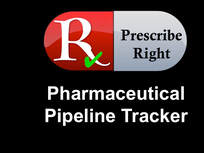|
The FDA initiated a pilot program, called Project Facilitate to help oncologists request investigational cancer treatments for patients that are not eligible for a clinical trial and who have exhausted current approved treatment options. Project Facilitate has a call center which provides help in submitting requests to FDA staff. The call center is a single point of contact for oncologists to request an experimental drug. The FDA created Project Facilitate, because of criticism that the process to request a drug through an expanded access program was too burdensome. The FDA decided to pilot enhanced help to access investigational drugs in oncology first. A pharmaceutical manufacturer still has to approve access for the patient, but if access is denied, the FDA will inquire as to why it was not granted.
Because of the perception of the difficulty in accessing investigational drugs, some states began implementing Right-to-Try laws allowing physicians to request access to an investigational drug on behalf of a patient. Federal Right-to-Try legislation was passed in May 2018. So, what is the difference between Right-to-Try and Expanded Access? Both programs are for patients with a life-threatening illness who have exhausted treatment options and are not eligible for a clinical trial or are too far away from a trial site. Insurance companies will not pay for the investigational drug or non-drug medical costs associated with treatment with either program. Expanded Access is also known as compassionate use and has been around for 30 years beginning with access to HIV drugs. Over the years the FDA has streamlined the process to improve access. Expanded Access to a drug requires a 2-page form, submitted by a physician and approved by an IRB. Over the past 5 years there have been 9,000 EAP applications, 99% were approved and 75% were approved in a few days. Manufacturers are permitted to charge patients an FDA approved price for the investigational drug. Right-to-Try has no FDA oversight of the treatment or treatment process. A physician makes an inquiry directly to the pharmaceutical company. Currently it is not clear how the request is made. An informed consent is also required, but it has not been defined who will create the risk and benefit description for the document. The pharmaceutical manufacturer must also provide an annual report of patients treated and safety issues. Formal guidelines for Right-to-Try have not been announced, but ERC-1671 (Gliovacfrom Epitopoietic Research Corp) became the first drug accessed through Right-to-Try in the fall of 2018. Prescribe Right will continue to monitor these programs and provide enhancements and updates to the Pharmaceutical Pipeline Tracker as additional information becomes available. This will allow you to be prepared for patient’s questions before they happen. Comments are closed.
|
Stay informed, subscribe to the
Prescribe Right Pharmaceutical Pipeline Tracker Latest Tweets from Prescribe Right
Archives
July 2023
|
Services |
Company |
Support |
© COPYRIGHT 2015. ALL RIGHTS RESERVED.
|


 RSS Feed
RSS Feed